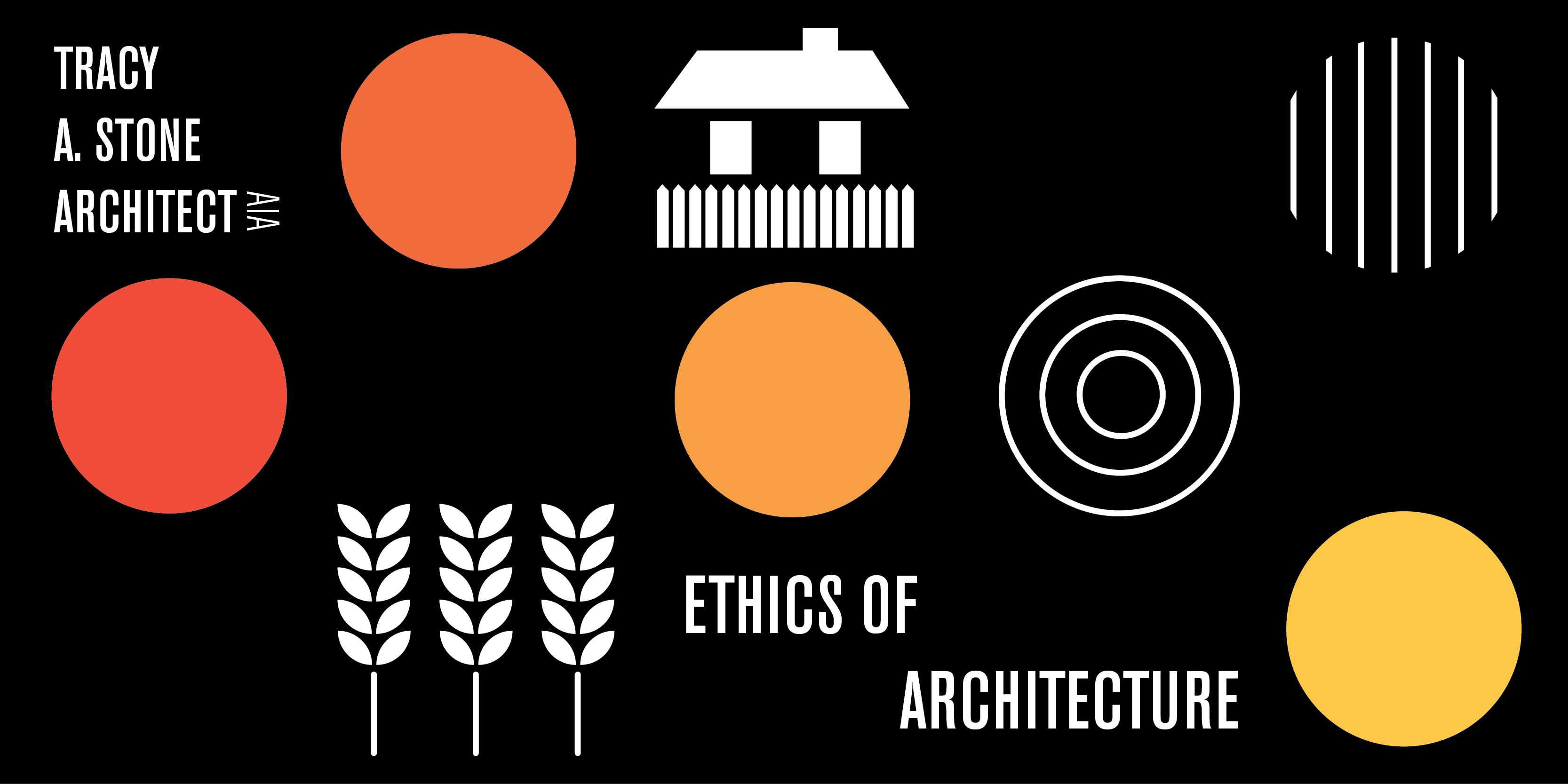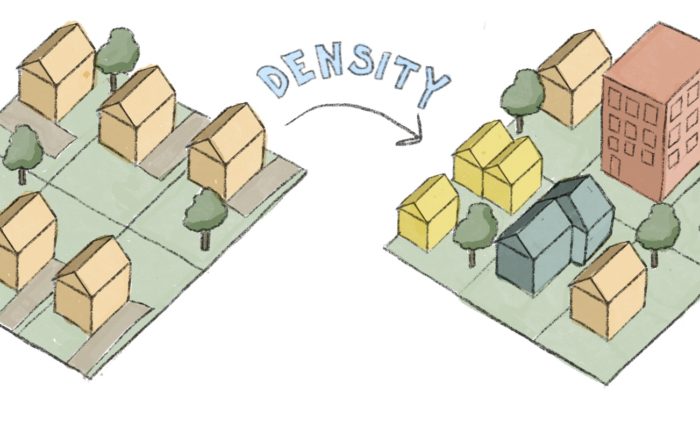Last month, nearly 150 U.S. architects and over 4,000 architects from other countries announced their support of an international movement called “Architects Declare,” adding their names to the growing list of firms supporting a manifesto demanding urgent climate action within the design and building sectors. We’re happy to announce that we are among the signatories to that list (which you may have noticed in our last newsletter). For more information and to read the full manifesto, visit us.architectsdeclare.com.
While our firm has always been oriented towards sustainable design with two LEED professionals on our team, we realize the need to go much further to address the climate emergency facing the world. In order to make this more than a lip-service gesture, we are starting a new blog series called “The Ethics of Architecture” in hopes of educating both ourselves and you, as consumers of architecture and design, in ways that can move the needle towards a more sustainable paradigm.
Since most building-related carbon emissions come from energy use, the first (and easiest) step in addressing emissions is reducing energy consumption in our well-loved homes. Simple enough, right? With increasing availability and affordability of energy-efficient appliances and systems, the future is looking greener than ever.
Here is a round-up of 6 simple ways your home can shrink its carbon footprint
(and save you some money in the long run – bonus!):
1. Upgrade your Windows/Doors and Insulation
According to the U.S. Department of Energy, 49% of a home’s energy bill is spent on heating and cooling – more than any other appliance in your home! Proper, continuous insulation and high-performance windows not only make your home more air-tight, but they allow your A/C and heater to take it down a notch, and thus, save on energy. By upgrading your windows and insulation, you can decrease your CO2 emissions and save up to 20% on overall energy costs.
2. Choose “Energy Star” Appliances
It’s no secret: consuming less energy means lower energy bills. The biggest offender among appliances is that 1980s beer fridge located in your garage. Energy Star estimates that refrigerators over 10 years old cost homeowners almost $5 billion in utility fees. According to the U.S. Environmental Protection Agency (EPA), by installing energy-efficient appliances, you can reduce your family’s greenhouse gas emissions by up to 130,000 pounds over the appliance’s lifetime. Next time you go shopping for refrigerators and other appliances, always look for the “Energy Star” label, which confirms that the appliance exceeds efficiency standards outlined by the EPA.
3. Install Water-Efficient Plumbing Fixtures
While this doesn’t affect energy consumption directly, water is our most vital resource and low-flow fixtures are a great way to save water. Consider equipping your house with a low-flow toilet. According to the EPA, toilets account for over 25% of a typical household’s water use.
Other ways to help save water (and money) are to install low-flow showerheads, high-efficiency faucets, or an aerator on your existing faucet. Switching out old, inefficient plumbing fixtures is a relatively inexpensive way to save money on utilities and help protect your community’s water supply.
4. Let the Sun Power Your House
Good news, California: our biggest asset can save you money on utility bills! Solar power is a 100% renewable, clean energy source allowing our homes to become less dependent on fossil fuels, which contribute to a large majority of the world’s CO2 emissions. Investing in solar is good for the planet, but also good for your wallet. With tax breaks and the initial cost of solar having gone down by 70% in the last decade1, investors in solar can see a return on their purchase in as little as seven years. In addition to having a lower monthly energy bill, solar panels can also improve the value of your home. According to Zillow, homes with solar sold for 4.1% more on average than houses without2.
5. Replace Your Thermostat
The future is here with smart thermostats. These efficient thermostats allow you to create automatic and programmable temperature settings based on a daily schedule. Standard thermostats only save energy if they’re programmed correctly, but studies show that most residential users never program them (guilty). A 2010 survey from the Lawrence Berkeley National Laboratory found that 89% of respondents rarely or never used their programmable thermostats to set a weekday or weekend program3.
What’s the difference between a smart thermostat and a standard programmable thermostat, you ask? The advantage of a smart thermostat is the ability to learn a household’s patterns and thus consume energy as efficiently as possible. Plus, there are the added conveniences of remote access from your phone and weekly energy reports.
6. Keep your Home Cooler with a Cool Roof
Next time you’re replacing your roof, lighten up a shade or two! Installing a cool roof keeps your house cooler, which allows your air conditioner to work less and conserve more energy, resulting in lower CO2 emissions. Cool roofs are designed to reflect more sunlight and absorb less heat than a standard roof. For comparison, standard dark roofs can reach temperatures of 150 degrees or more, while a cool roof would stay about 50 degrees cooler in the same conditions. A Lawrence Berkley National Laboratory study found that world-wide reflective roofing would produce a global cooling effect equivalent to offsetting 24 gigatons of CO2 over the lifetime of the roof, which equates to $600 billion in savings from CO2 emissions reductions4.
Another option to consider is a green roof. Similar to cool roofs, green roofs also help keep your house cool, but with the added benefit that they can improve air quality, act as a rain buffer to keep sewers cleaner, and can extend the life of your roof up to 60 years5.
Conclusion
The climate crisis is often pushed to the back of our minds, especially when it comes to how buildings are designed and built. While there is no quick fix to the climate crisis, these are a few easy and simple ways you can lessen your impact through your home’s carbon footprint. We hope you join us in raising awareness of the climate and biodiversity emergencies and the urgent need for action.
If your firm is interested in joining the growing list of signatories,
sign the manifesto here: https://us.architectsdeclare.com/
Sources
- https://www.seia.org/solar-industry-research-data
- https://www.zillow.com/research/solar-panels-house-sell-more-23798/
- https://www.aceee.org/files/proceedings/2010/data/papers/1963.pdf
- https://link.springer.com/article/10.1007/s10584-008-9515-9
- https://www.gardenista.com/posts/hardscaping-101-green-roofs/



